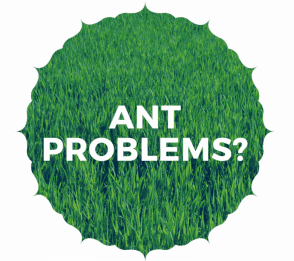
Is your home being overrun? Have a yard that is under attack? Let us help!
With our outside Ant Baiting stations, utilizing Domin Ant Bait.
products, we can help to keep your home and lawn ant free for as low as $20.00 per year!
Contact us for a complimentary ant consultation! Scroll down to learn more about lawn ant management.

Fire Ant Management In The Home Lawn
The impacts of fire ants are well understood by anyone who has been stung by them. Their impacts, however, go far beyond the medical implications of their venomous stings. Millions of dollars are spent each year attempting to manage fire ants. As an invasive species, they do not have natural enemie As predators and scavengers, they have direct and indirect impacts on the ecological system.
Fire ants are one of the most studied insects, but they may be surrounded by the greatest number of misconceptions and myths. This fact sheet presents a little of what we know about fire ants.
Fire Ant Biology
Fire ants mate when the temperature is between 70˚and 95˚F, usually within 24 hours of a rain. The humidity must be high and the wind calm. This can occur anytime of year, but peaks in spring and fall months. Winged males and females fly into the air as high as 2,000 ft. After mating the males promptly die having fulfilled their only purpose. The newly mated females can fly as far as 2-3 miles before landing. Once they land, they tear their wings off and search for a suitable nesting site in the soil. Nearly 99.9% of all the females die before they are able to begin a nest because of predation and poor landing sites such as swimming pools and ponds.
This “queen to be” burrows a few inches into the soil and forms a chamber that she seals with a waterproof mixture of soil and saliva. The queen then begins to lay eggs. Using the energy reserves from her wing muscles, she rears a few young to adulthood. This takes about 45 days or less depending upon the temperature.
The new workers break out of the chamber and begin foraging for food. They care for the queen and the young. From this point on the queen does only one thing – lay eggs to the tune of 100,000 – 300,000 per year. She may live 6-7 years.
Although fire ants are voracious predators, they do not eat solid foods. They place solids on the “lip” of the late stage larvae. The larvae secrete digestive enzymes into this “lip” and convert the solids to a liquid. All other ants feed through a process called trophallaxis where they pass this liquid food from ant to ant. This gives the colony built in “food tasters”. If any ant in the colony becomes sick due to bad food (or bait), the queen is not fed from that food source. She can always make more workers and the colony continues as long as she lives.
Fire ants forage when the surface soil temperature is between 70˚ and 95˚F. In the summer months this is primarily at night. They may travel up to 100 yards from their mound in search of food. Bait strategies rely heavily on this behavior and allow us to treat away from sensitive areas while reducing the risk of pesticide contamination.
Fire Ant Management
So what does this mean to the homeowner struggling to control this creature in their back yard? We can use knowledge of fire ant foraging and feeding behavior to gain the upper hand in our battle. With current technology, we must recognize that fire ant control will be a long-term commitment. The ants can reinfest from long distances and their reproductive potential is great.
Fire Ant Management Strategy 1
The Two Step Method
The most commonly recommended fire ant management strategy is the Two Step Method:
Step 1: Broadcast fire ant bait at a time of day when the ants are actively foraging.

